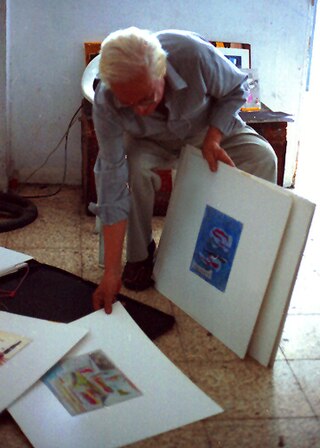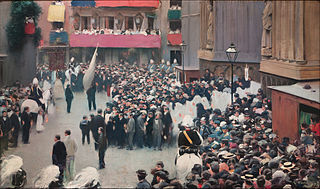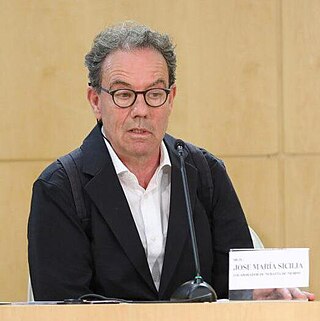
The Museo del Prado, officially known as Museo Nacional del Prado, is the main Spanish national art museum, located in central Madrid. It houses collections of European art, dating from the 12th century to the early 20th century, based on the former Spanish royal collection, and the single best collection of Spanish art. Founded as a museum of paintings and sculpture in 1819, it also contains important collections of other types of works. The numerous works by Francisco Goya, the single most extensively represented artist, as well as by Hieronymus Bosch, El Greco, Peter Paul Rubens, Titian, and Diego Velázquez, are some of the highlights of the collection. Velázquez and his keen eye and sensibility were also responsible for bringing much of the museum's fine collection of Italian masters to Spain, now one of the largest outside of Italy.

The Museo Nacional Centro de Arte Reina Sofía is Spain's national museum of 20th-century art. The museum was officially inaugurated on September 10, 1992, and is named for Queen Sofía. It is located in Madrid, near the Atocha train and metro stations, at the southern end of the so-called Golden Triangle of Art.

Ramon Casas i Carbó was a Catalan artist. Living through a turbulent time in the history of his native Barcelona, he was known as a portraitist, sketching and painting the intellectual, economic, and political elite of Barcelona, Paris, Madrid, and beyond. He was also known for his paintings of crowd scenes ranging from the audience at a bullfight to the assembly for an execution to rioters in the Barcelona streets. Also a graphic designer, his posters and postcards helped to define the Catalan art movement known as modernisme.

Luis Enrique Tábara was a master Ecuadorian painter and teacher representing a whole Hispanic pictorial and artistic culture.
Manolo Millares was a Spanish painter.
Octavio Zaya is an art critic and curator, born in Las Palmas, and living in New York City since 1978. He is Director of Atlántica, a bilingual quarterly magazine published by CAAM ; he is Curator at Large and Advisor of MUSAC MUSAC](León, Spain);and a member of the advisory board of Performa. He is on the editorial board of Nka: Journal of Contemporary African Art and a NY correspondent for Flash Art. He was one of the curators of, as part of the group directed by Okwui Enwezor. He was also one of the curators of the first and second (1995 and 1997. The large list of exhibitions he has curated include In/Sight, African Photographers 1940 to the Present (Guggenheim Museum, New York, 1997, and Versiones del Sur. Latinoamerica at Centro de Arte Reina Sofia [. He was one of the curators of Fresh Cream, has authored more than a dozen books on artists, and has contributed to numerous other books and catalogues. He recently curated important exhibitions of the works of Cerith Wyn Evans and Paul Pfeiffer at MUSAC.

Josep Guinovart i Bertran was a Spanish painter best known for his informalist or abstract expressionist work.

The Casón del Buen Retiro is an annex of the Museo del Prado complex in Madrid. Following major restoration work, which was completed in October 2007, it now houses the museum's study centre and library.

María Gutiérrez-Cueto y Blanchard was a Spanish painter. She was known for developing a unique style of Cubism.

The Museum of Modern Art was the Spanish national museum dedicated to 19th- and 20th-century painting. It was set up in 1894. It closed in 1971, when its 19th-century collections were merged into those of the Museo del Prado, but housed at the Casón del Buen Retiro, and its 20th-century collections formed into the Spanish Museum of Contemporary Art, the predecessor of the present-day Museo Nacional Centro de Arte Reina Sofía.

Eduard Arranz Bravo was a Catalan Spanish painter.

Ángeles Santos Torroella was a Catalan Spanish surrealist painter. Born in Portbou, Catalonia, she was the sister of the poet and art critic Rafael Santos Torroella. She married the painter Emili Grau Sala. Her son is the painter ca:Julià Grau i Santos. In 2003 she received the Gold Medal of Merit in the Fine Arts, awarded by the Ministry of Culture of Spain and in 2005, the Creu de Sant Jordi, awarded by the Government of Catalonia.

The Corpus Christi Procession Leaving the Church of Santa Maria del Mar is an oil painting by Ramon Casas painted in 1898 in Barcelona and currently in the Museu Nacional d'Art de Catalunya in Barcelona.

José Romano Gutiérrez-Solana y Gutiérrez-Solana was a Spanish painter, engraver and author. He usually signed his paintings as "J. Solana". Generally, he is considered to be an Expressionist, but his style was heavily influenced by El Greco, the Black Paintings of Goya and the works of Eugenio Lucas Velázquez.

José María Sicilia is a Spanish abstractionist painter who currently resides in Paris and Sóller.
Fernando Briones Carmona was a Spanish painter. He was born in Écija and died in Madrid, where he spent most of his life.

Rosario de Velasco Belausteguigoitia was a Spanish figurative painter who was a member of the Sociedad de Artistas Ibéricos and close to the German New Objectivity.
Alberto Corazón Climent was a Spanish multidisciplinary artist who combined graphic design, sculpture, painting, and photography into his works. Some of his works are housed at contemporary museums including Bilbao Fine Arts Museum, Museum of Contemporary Art, Madrid, and Institut Valencià d'Art Modern. He worked as a graphic designer for clients including the organizations National Library of Spain, Autonomous University of Madrid, Anaya, ONCE, Círculo de Bellas Artes, and Renfe Operadora. He was inducted as the member of the Real Academia de Bellas Artes de San Fernando in 2006.

Una esclava en venta is a painting by José Jiménez Aranda. Aranda was a Spanish painter, from Sevilla. The painting was made in 1897. Today, it is in the Museo de Málaga. It measures 100 by 82cm. In English, it is called Slave for Sale.















